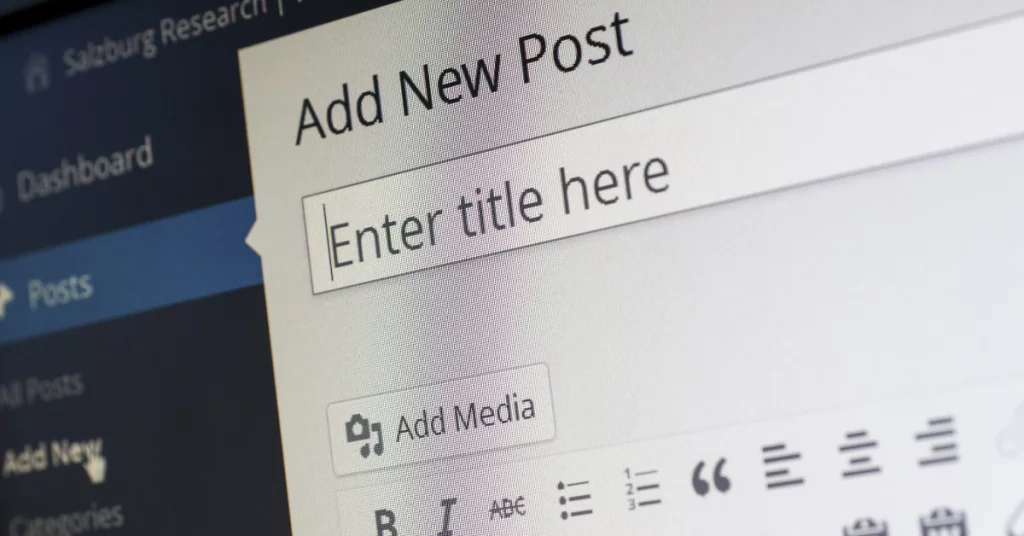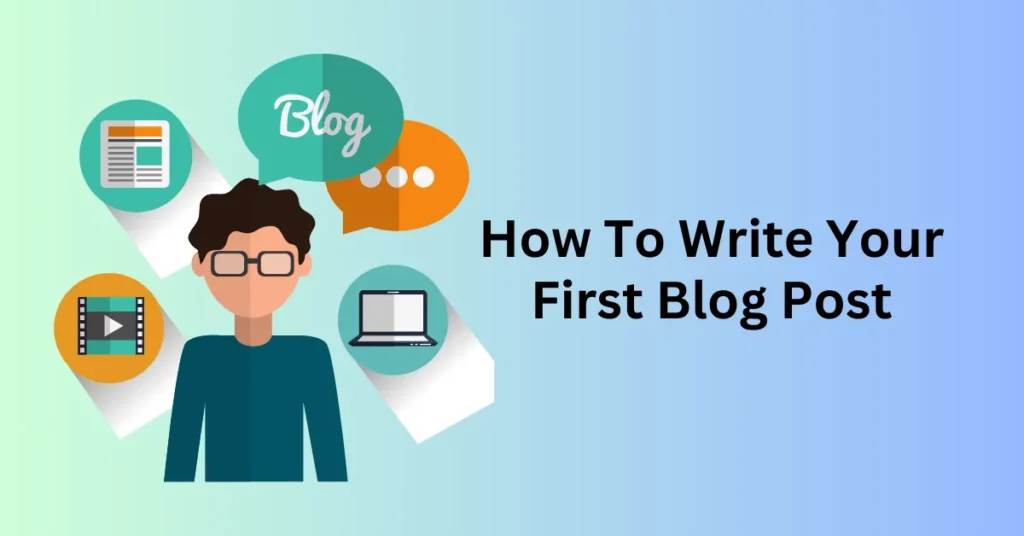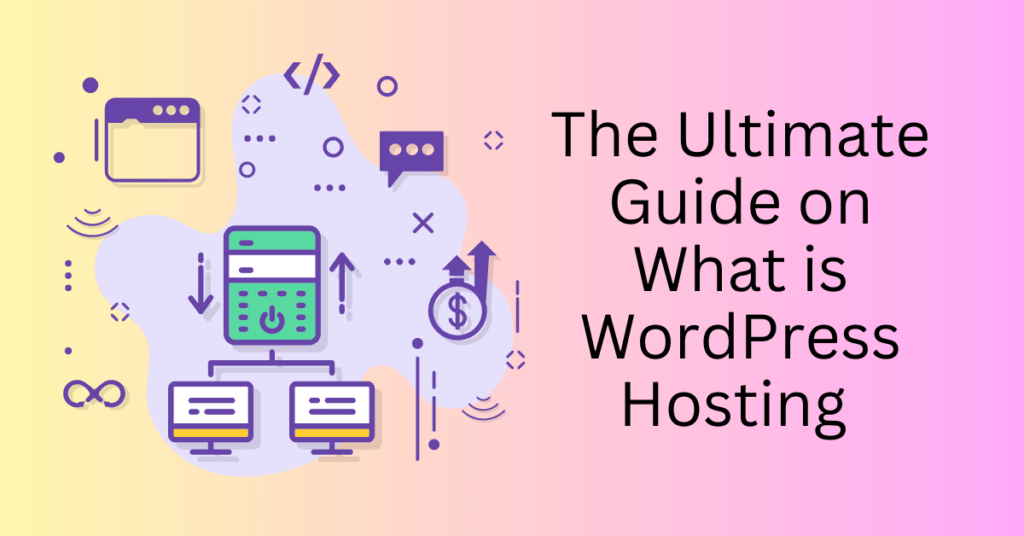Welcome to the guide on writing your first blog post! After thorough planning, preparation, and setting up your blog with a theme, today marks the beginning of your journey as a writer. This moment is significant, especially if you’re publishing online for the first time.
In this post, we provide a first blog post example to kickstart your writing experience. We’ll explore various types of posts, guide you through setting up and formatting your first post, crafting a compelling introduction, and mastering editing, proofreading, and basic blog post SEO.
Drawing from our extensive blogging and writing experience, we’ve compiled essential tips and best practices to ensure your success. Everything here is aimed at helping you write your inaugural blog post with confidence and pride. So, let’s not delay any further—let’s begin!
Start Your Blog Today With Bluehost Hosting
Writing Your First Blog Post
The beauty of blogging lies in its freedom. There are only a few guidelines to follow, and even those are flexible. You have the liberty to write whatever you want, however, you want, whenever you want.
However, the more organized you are and the more you consider your end goal and audience, the more successful your blog will be.

While a blog offers total freedom of expression, achieving specific objectives—whether for a business, hobby, club, or other purposes—requires considering your audience.
Here’s one of the best pieces of advice about blogging and writing for the web: It isn’t about you. It’s about your audience.
These two sentences encapsulate why some bloggers achieve greater success than others. They remind us to always keep the audience at the forefront of our writing. Your audience should be the focus of everything you write.
Always aim to provide your audience with what they want. Write in a tone they will respond to, use language they are familiar with, and choose blog post types they know and love.
Remember all the time we suggested spending on audience analysis in earlier chapters? This is why!
Your blog may be an outlet for expression and a platform to create a community and build a following, but it is not about you. It’s about delivering value to your audience.
Start Your Blog Today With Bluehost Hosting
Type of Blog Post
There are several types of blog posts you’ll want to become familiar with. Offering a variety of post types can significantly enhance your blog’s appeal, generating more interest and engagement. Audiences thrive on innovation, variety, and entertainment. If you stick to the same format repeatedly, your readers may quickly lose interest.
Here are the main types of blog posts to consider:
List Posts
List posts break down a core concept, whether it’s solving problems, offering options, or promoting products, into a list format. These posts are incredibly popular and work well for SEO and social media sharing. Their structured format makes them easy to read and digest.
How-to Posts
How-to posts are perennial favorites because they address specific problems. Success with these posts hinges on clarity and simplicity. Ensure your instructions are logical and easy to follow, catering to readers of all skill levels. Including illustrative images can greatly enhance comprehension, especially for visual learners.
Tutorials and Guides
Tutorials and guides are similar to how-to posts but typically cover more comprehensive topics or multiple problems. They go beyond simple problem-solving to provide in-depth insights and instructions on a broader subject.
Review Posts
Review posts are effective as long as the writer is knowledgeable about the subject. Readers can easily discern when a review is written by someone with limited understanding. To maintain credibility, review subjects you are well-versed in. Transparency is crucial—clearly disclose any vested interests to build and maintain trust with your audience. For example, when we review products like Astra, we acknowledge our association while striving to remain as impartial as possible.
Roundup Posts
Roundup posts compile a collection of tips, reviews, or interviews related to a specific topic. They can include expert opinions, curated content from platforms like Quora, or insights from influencers in your industry. This format provides a comprehensive view of a subject and can attract a wide audience.
Interview Posts
Interview posts can be highly engaging, but they require access to noteworthy individuals and thoughtful, insightful questions. Avoid clichéd questions like “How did you get started in…”. Instead, aim for questions that elicit interesting, unique responses. Well-executed interviews can offer valuable insights and draw significant interest.
Infographic Posts
Infographic posts were extremely popular in 2019 and 2020. While their popularity has waned somewhat, they remain effective for conveying complex ideas in a visually appealing and accessible way. If you have graphic design skills or can collaborate with someone who does, infographics can be a powerful tool for engaging visual learners and simplifying complicated concepts.
What Your First Blog Post Should Be About

We believe that starting your blog should be akin to initiating any new relationship: it should begin with a proper introduction.
When we meet someone new, we typically introduce ourselves, explain our purpose, and share a bit about what we do. This universally understood format, whether in formal or informal settings, makes it an ideal template for your first blog post.
Your inaugural blog post should ideally cover the following elements:
Friendly Introduction: Begin with a warm introduction. Share your name and a bit about your personality to create a connection with your readers.
What You Do: Explain what you do, whether it’s your profession, hobby, or passion. This helps readers understand your perspective and interests.
Blog Purpose: Clearly outline the main topics your blog will cover. This sets expectations and helps attract the right audience.
Objectives: Share your goals for the blog. Whether you aim to educate, entertain, inspire, or build a community, let your readers know your intentions.
Posting Frequency: Inform your readers about your posting schedule. Consistency is key to building a loyal readership, so let them know what to expect.
Establishing Credibility: Expand on what makes you qualified to write about your chosen subject. Mention your background, skill level, years of experience, and any relevant achievements or credentials. Besides, if you’re new to the subject, be honest about it. Invite your readers to join you on your learning journey. This approach can foster a sense of community and mutual growth.
Start Your Blog Today With Bluehost Hosting
Planning Your First Blog Post

We’ve discussed the importance of planning your posts and creating a content schedule. When writing your first blog post, you’ll need a condensed version of that plan. Over time, you’ll develop your own process for brainstorming and selecting topics. Meanwhile, here are some key points to keep in mind.
Write for Your Audience
As we mentioned earlier, blogging isn’t just about you. It’s crucial to understand your audience and write for them. They’re the ones reading your blog, not you. Every time you sit down to write, keep your audience at the forefront of your mind. Each word and sentence should be crafted to appeal to them. While your personal touch is important, your audience should always be your primary focus.
Keep a Notepad Around
Always have a way to record ideas for blog posts, whether it’s with a pen and paper or a digital app. Inspiration can strike at any moment, and you’ll want to capture those ideas immediately. Even if you have a great memory, it’s easy to forget an amazing idea you had while walking the dog or shopping for groceries. Recording your ideas on the spot ensures you never lose a spark of inspiration.
Identify Keywords
SEO is a key consideration in blog writing, but it should always play a secondary role to entertaining and informing your audience. To help your blog gain visibility, you’ll need to rank well in search engines. Perform keyword research on your topics to identify popular terms and subtly incorporate them into your posts.
Write an Outline
Outlines aren’t always necessary, but they can be extremely helpful for longer posts or complex ideas. An outline helps you organize your thoughts and ensures your content flows logically. It can be as simple as jotting down the main idea and subheadings or as detailed as drafting the entire post. Use whatever method works best for you.
Write an Attractive Introductory Blog Post
Your blog post introduction should cover the what, why, and how of your post. It should briefly outline the content, what the reader will learn, and include a hook to draw them in. For example, this introduction outlines what the post is about, what we will cover, what you will learn, and adds a hook about successful blogging to keep you engaged. Use a similar approach to captivate your readers.
Proofread and Edit Your Blog Post
“Edit twice and publish once” is sage advice we’ve picked up over the years. Proofreading and editing are just as important as writing. Proofreading ensures your punctuation, spelling, and grammar are correct while editing checks for readability, sentence construction, and accuracy. We recommend writing your blog post, and then leaving it overnight before editing. This break allows you to catch errors and inconsistencies you might otherwise miss. If time permits, leave the post for another few hours or overnight and edit again before publishing. Otherwise, have someone else review your work. If not, the overnight method is highly effective.
Write a Catchy Title
Blog post titles are an art form. They need to be compelling, informative, interesting, and include your main SEO keywords, all within 6-10 words. There are many resources on writing the perfect headline, so we won’t dwell on it here. However, always ensure your title accurately reflects your content. Misleading titles can damage your credibility and trust with your audience.
Put the Target Keyword in the Slug
The ‘slug’ is the part of your blog post URL that follows your domain name. Including keywords in your slug can enhance your SEO, help readers understand the topic, and make the URL more appealing. If you use WordPress, you can set your URLs to display the post name in the Permalinks section under Settings. This makes your slug more descriptive and user-friendly.
Include a Call to Action
A call to action (CTA) guides your readers towards a specific goal. On our website, we use a simple “Download Now” CTA to encourage users to download and use Astra as their WordPress theme. Your CTA should align with your blog’s goals. It could be:
- Signing up for a newsletter
- Buying a product or service
- Downloading an app or theme
- Registering to join
- Scheduling a free consultation
- Accessing limited content
Include only one CTA per post and ensure it aligns with your overall website ambition.
Ask Users to Leave Comments
Blogs are a two-way street, offering a platform for discussion. Encouraging comments fosters interaction and builds a community. Disabling comments turns your blog into a one-sided conversation, reducing engagement. Remind readers they can comment and share their views, turning passive readers into active participants. Engaging with your audience through comments can be a rewarding experience.
Publish Your First Blog Post
After writing your first blog post, it’s time to publish. This moment can be both exciting and nerve-wracking. You might worry about whether people will like it or if it’s good enough. These concerns are natural but need to be overcome. Don’t stress too much about others’ opinions. If you’re satisfied with your post and believe it’s the best it can be, with your audience in mind, hit that publish button.
Your first blog post is just the beginning of your blogging journey. Embrace it, learn from it, and continue to grow as a blogger.
Start Your Blog Today With Bluehost Hosting
Things to Keep in Mind When Writing a Blog Post
Blogging offers relaxed freedom of expression, but following some best practices can help you write more effectively and ensure your audience understands your message. While these aren’t strict rules, they are worth considering when writing blog posts.
Use Supporting Sub-headers
Organizing a blog post is essential for online reading. People often scan rather than read thoroughly on screens. Sub-headers break up large blocks of text into smaller, more digestible sections, making it easier to follow your ideas. Adding relevant titles helps guide the reader through the content and sets expectations for what comes next.
Use Short Sentences and Paragraphs
Because readers tend to scan online content, long sentences and paragraphs can be discouraging. Avoid creating large walls of text. Keep sentences concise and focused on one idea at a time. Limit paragraphs to 2-5 sentences. While you don’t need sub-headers between every paragraph, use them occasionally to break up the text.
Learning to use H1, H2, and H3 headings early on will help keep your writing organized. Proper structure should mean you rarely need to use H4 headings.
Keep the Language Simple
Using simple language ensures that the widest possible audience can understand your blog. Even if you have extensive experience and your audience is similarly knowledgeable, writing in a way that only your peers understand can limit your blog’s reach and appeal.
Blogging is about sharing ideas, exploring subjects, and engaging with a broad audience. To do this effectively, make sure your content is accessible to all readers.
This doesn’t mean you can’t have in-depth discussions. Just balance them with more universally appealing posts and inform your readers when a topic is more complex. This way, they can choose whether to continue reading or skip to another post.
Properly Punctuate
Punctuation in blogs can be more relaxed, but it’s still important to adhere to the basic rules. Utilize the essentials: capital letters, periods, commas, and other fundamental punctuation marks to ensure clarity and readability in your writing. While it’s not necessary to use hyphens or the Oxford comma, you may choose to include them based on your preference. However, keep in mind that overusing minor punctuation marks can clutter the screen and disrupt the flow of your sentences. Ultimately, trust your judgment, but remember that not every rule must be followed rigidly.
Avoid Grammatical Errors
Similar to punctuation, grammar in blog posts can be more relaxed compared to other forms of writing. Your blog should be coherent and employ good grammar without being excessively formal. As long as your sentences make sense, your punctuation is correctly placed, and your paragraphs read smoothly aloud, you are on the right track.
Be cautious with grammar-checking plugins, as they often rigidly adhere to rules without considering context. These tools can be beneficial, especially if you are still honing your writing skills, but use discretion. If a suggested correction from the plugin doesn’t fit, it’s perfectly acceptable to ignore it.
Never Plagiarize
While audiences can be forgiving about many things, plagiarism is not one of them. Copying someone else’s work is unacceptable both in school and online. Feel free to quote others, use their ideas, and follow their concepts, but always be transparent about it. Use these elements sparingly and ensure you attribute the original source with a link. This not only shows respect for the original creator but also maintains your credibility with your audience.
Use Images, Video, and Interactive Content
One of the major advantages of platforms like WordPress is the ability to seamlessly integrate rich media into your posts. Images, videos, and interactive content are essential elements that should be used generously in your blog.
Rich content serves multiple purposes: it breaks up long blocks of text, making your posts more visually appealing and engaging; it adds depth and context to your ideas, allowing you to show rather than just tell; and it injects colour and vibrancy into your blog, making it more attractive to readers. Embrace the use of these media elements liberally to enhance your blog posts.
Use Links in Posts
Understanding and effectively using links is crucial before you start writing your first blog post. Linking is a fundamental part of the internet’s infrastructure, and mastering it can significantly benefit your blog.
Internally linking to other posts or pages on your website can improve your site’s SEO and help readers navigate your content more easily. Externally linking to authoritative sources can expand on your ideas, provide additional learning opportunities for your readers, and further boost your SEO. Linking is the backbone of the web, and incorporating it into your blogging strategy is essential.
Use White Space
“White space” is a term borrowed from the newspaper industry, referring to the areas between printed text. In digital terms, it denotes any part of a web page that is free of content.
White space is crucial for providing visual breaks, allowing readers’ eyes to rest and their brains to process the information. It’s a key aspect of good web design and a significant reason why minimalist web design has become so popular. Incorporating ample white space in your blog design will improve readability and overall user experience.
Use Bullet Points
Bullet points are an excellent tool for organizing a series of ideas or points in a scannable, easily digestible format. They are particularly useful for:
- How-to guides
- Summarizing statistics
- Outlining processes
- Listing various elements in an organized manner
Using bullet points and numbered lists can make your content more reader-friendly and help convey your information effectively.
Consider the Length of Your Blog Post
The debate over the ideal length for a blog post has been ongoing since the inception of blogging. Opinions vary, with some suggesting an ideal length of 1,600 words, while others recommend between 2,100 and 2,400 words.
A simpler approach is to write your blog posts as long as necessary to convey your message effectively. Keep these points in mind:
- Write only what you need to get your point across.
- Avoid boring your audience or repeating yourself too much.
If your blog posts are informative, interesting, and entertaining, readers will engage with them regardless of their length.
Respond to Blog Post Comments
Blogging is a two-way street. It provides an opportunity for you to express your thoughts and share your passions, but it also facilitates a conversation between you and your audience.
Blogs and comments complement each other, much like the moon and the stars. One doesn’t function well without the other. When people comment on your blog, WordPress will notify you on your dashboard. Ensure that you:
- Check all comments regularly.
- Respond to comments professionally.
Regardless of the nature of the comments, never engage with trolls. Delete spam, toxic comments, and general negativity to maintain a positive environment on your blog.
Final Thoughts: How To Write Your First Blog Post
Writing your first blog post is an exciting and significant milestone in your blogging journey. This process involves various crucial steps, each contributing to the overall success of your blog. From meticulous planning and thorough research to creating a compelling introduction and optimizing for SEO, every aspect is vital.
Firstly, understand that the foundation of a good blog post lies in detailed planning and preparation. This includes selecting a topic that resonates with your target audience, conducting comprehensive research to ensure accuracy and relevance, and organizing your thoughts into a clear and coherent structure.
Next, focus on crafting a compelling introduction. This is your chance to grab the reader’s attention and entice them to read further. An engaging opening sets the tone for the rest of the post and can significantly impact reader retention.
Formatting your blog post is another critical element. Proper headings, subheadings, bullet points, and visuals not only make your content more readable but also enhance its visual appeal. This helps in keeping your audience engaged and makes your post more digestible.
Editing and proofreading are essential steps that should not be overlooked. A well-written post free of grammatical errors and typos reflects professionalism and builds trust with your readers. Take the time to review your content, and consider seeking feedback from others to ensure clarity and coherence.
Optimizing your post for search engines (SEO) is crucial for increasing its visibility. This involves using relevant keywords, optimizing images, and ensuring your post meets SEO best practices. A well-optimized post can attract more traffic and help your blog reach a broader audience.


